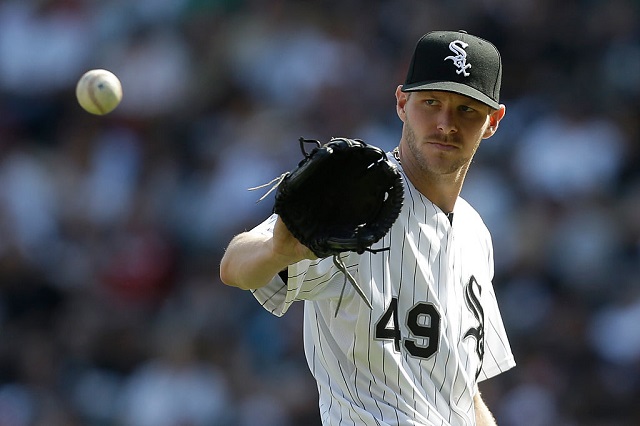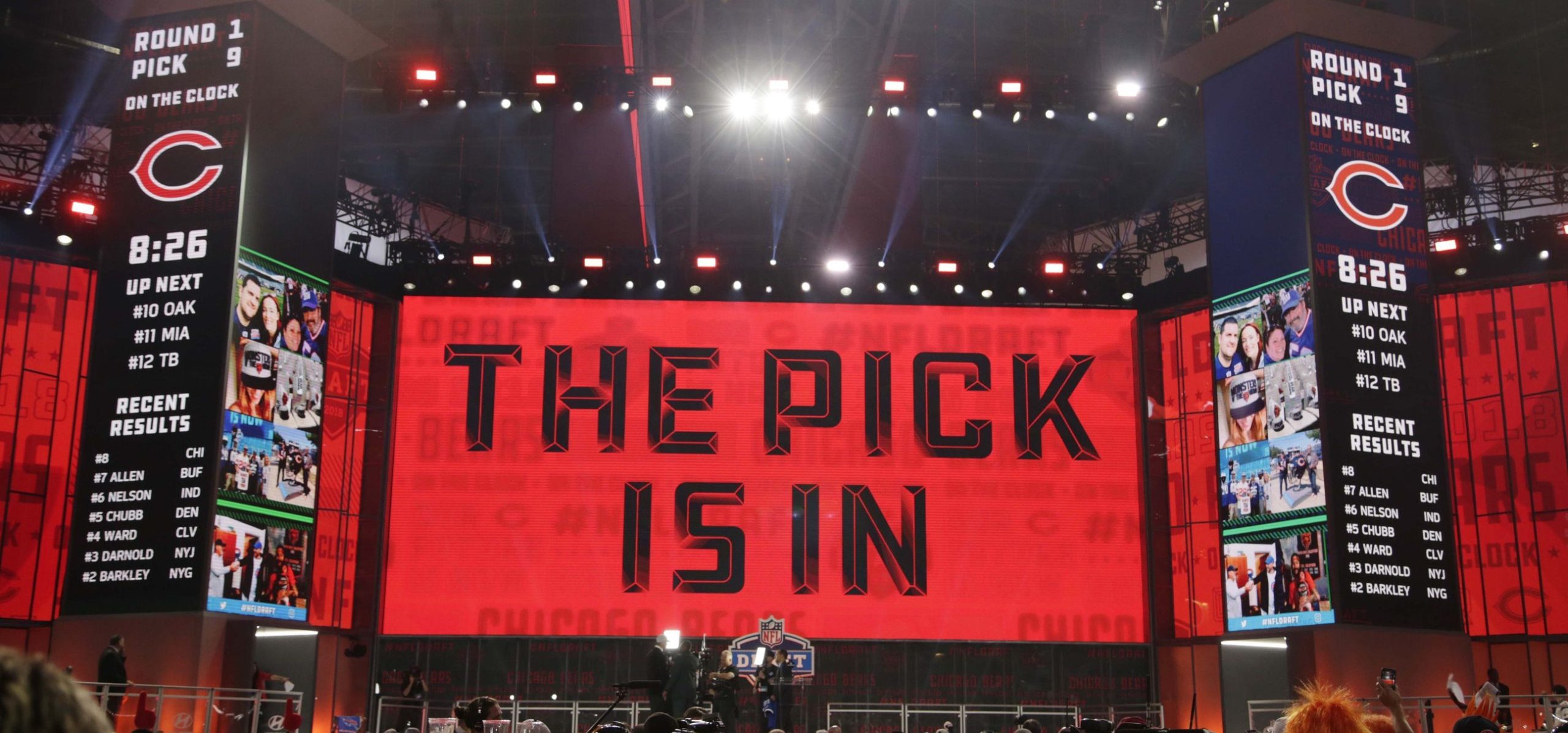After years of bad signings and trades, the Chicago White Sox may be moving in the right direction by trading Chris Sale.
At 6-foot-6 and 180 pounds, Chris Sale’s unorthodox pitching motion typically drew curiosity and awe from spectators. But that unusual throwing style made a huge impact for the Chicago White Sox, as the left-hander ranks No. 1 in franchise history in strikeouts per nine innings.
Chris Sale slo mo!https://t.co/QcFkxLsOs7
— NoontimeBaseball (@noontimegifs) September 3, 2016
However, after failing to make the postseason for eight consecutive campaigns, the White Sox finally decided to part ways with its superstar pitcher to begin building for the future. On Tuesday, Boston Red Sox general manager Dave Dombrowski ponied up a steep price for Sale, dealing second baseman Yoan Moncada, arguably the No. 1 prospect in all of baseball, pitchers Michael Kopech and Victor Diaz, and outfielder Luis Basabe to the South Side.
For some fans, reeling in a sizable haul for the dominant starter still caused numerous stomach pains.
https://twitter.com/NealMarcus1702/status/806204462998163460
Yet the disappointment seems somewhat reasonable. Chicagoans sparsely flocked over to then-U.S. Cellular Field to watch a select group of players: starter Jose Quintana, first baseman Jose Abreu, center fielder Adam Eaton, shortstop Tim Anderson, and, oh, the pretty decent lefty. The Florida native compiled a 74-50 mark in 228 appearances and was excessively dominant over the last two seasons.
In 2015, Sale placed No. 1 in MLB in strikeouts per nine innings pitched (11.8), No. 3 in total strikeouts (274) and No. 5 in Fielding Independent Pitching (FIP, 2.75), which generates an earned run average-like total based off a pitcher’s three true outcomes (walks, strikeouts and home runs). He added to his resume last season, standing No. 1 in complete games (six) and No. 4 in innings pitched (226.2).
Pair that with Quintana, who accumulated the fourth-highest wins above replacement (WAR, 5.2) in the American League in 2016, and the White Sox’s one-two punch at least put them in contention, right? Try again. In fact, the team’s recent misery goes beyond two players, surprisingly. It stems from an utter lack of self-discipline within the front office.
Underlying today is the unpleasant reality the White Sox had almost 5 full years of Sale-Quintana and finished over .500 once.
— Chris Rongey (@ChrisRongey) December 6, 2016
Following its last trip to the postseason in 2008, falling to the Joe Maddon-led Tampa Bay Rays in the Divisional Series, Chicago parted ways with third baseman Joe Crede, shortstop Orlando Cabrera, then-senior citizen Ken Griffey, Jr. and the always irritating Nick Swisher.
None of those pieces would have transformed the roster into a playoff contender again, but the White Sox still attempted to discover others. First, they acquired starting pitcher Jake Peavy from the Padres in a four-team deal. Then came outfielder Alex Rios, who was once considered a five-tool player, off a waiver claim. Both were obviously brought in to chase a spot in mid-October for years to come.
Whiff. On top of numerous health issues, Peavy never racked up a sub-3.45 ERA and posted two seasons with a minimum-4.64 ERA in three-plus seasons with Chicago. The prospects dealt for him didn’t pan out, yet it was a risky flip, considering the team invested in him down the road. Moreover, Rios put together two solid stints, during which he hit at least 21 home runs and 88 RBI, but failed to consistently produce the sorts of numbers that could warrant adding roughly $60 million onto the organization’s payroll.
Nonetheless, an 88-74 record and a second-place finish in the AL Central in 2010 convinced the club it was worth investing stock in a possible contender. Hence, then-GM Kenny Williams went “all in,” bringing in first baseman-turned-DH Adam Dunn. The $56 million prize collected a .159/11 HR/42 RBI stat line that season, as well as a -3.1 WAR. If those numbers couldn’t create enough excitement, how about a 79-83 mark to go along with them?
Sayonara, long-time manager Ozzie Guillen. Hello, Robin Ventura.
Ventura, who was brought in with no prior managing experience, stepped in when Williams insisted that the franchise was in rebuilding mode. But in reality, the club retooled, moving minor pieces, like outfielders Juan Pierre, Carlos Quentin and reliever Sergio Santos. For just over 90 percent of the season, it looked to pay dividends with the White Sox holding a first-place lead into mid-September. But the team lost 10 of its final 12 games, finishing three games behind the eventual AL Central champion Detroit Tigers.
Despite acquiring third baseman Kevin Youkilis before the trade deadline, the organization clearly overachieved and found a way to collapse down the stretch. Thus, Williams was promoted to executive vice president while Rick Hahn took over the GM role. But the team still had to deal with the repercussions of falling in love with players past their prime.
Over the next four seasons, the White Sox would amass a 290-358 record (.447), which included a woeful 63-99 season in 2013. Remarkably, they would continue to provide the fan base with false hope, even when striving to build for the future. In a trade that sent Peavy to the Red Sox in a three-team deal in 2013, Tigers’ outfielder Avisail Garcia was sent to the South Side and has hit .257 with 37 home runs since.
Subsequently, the franchise relapsed back to its old ways in the 2014-15 offseason, signing 35-year-old DH Adam LaRoche, 30-year-old outfielder Melky Cabrera, closer David Robertson and trading for starting pitcher Jeff Samardzija. While Robertson and Samardzija were a bit younger, Hahn and company once again evidently prioritized a chance to climb from the depths of mediocrity over rebuilding.
Well, back-to-back fourth place finishes in the division can’t defend that logic. In his lone season with the White Sox, Samardzija’s ERA ballooned to a 4.96 mark. Additionally, LaRoche hit a mere .207 with just 44 RBI and then retired because his son couldn’t enter the clubhouse anymore. Apart from that oddity, Cabrera and Robertson haven’t exactly stolen money from the organization, but inconsistency has still plagued them at points.
Last season, third baseman Todd Frazier was acquired from the Cincinnati Reds in exchange for an inexpensive package and led the team with 40 home runs. But a .225 batting average and .302 on-base percentage didn’t provide the consistent offense and baserunning that the lineup needs.
I wrote these things https://t.co/nqFWY0HE4D
— Eric Longenhagen (@longenhagen) December 6, 2016
After a disappointing 78-84 record, though, the White Sox were faced with the dilemma of futilely trying to contend with its current roster or begin to rebuild. To make up for past mistakes and truly start from scratch, the club needed to deal away one of the best pitchers in franchise history.
As a result, a once-dwindling farm system is partially revived following the Sale deal, pushing the White Sox to No. 15 overall, according to NEIFI analytics. But if the team is serious about starting over, there needs to be a ripple effect with more established veterans traded to provide young talent for Rick Renteria, who shifts into the manager’s office after serving as the bench coach last season.
Quintana? Abreu? Eaton? Robertson? Cabrera? Frazier? The White Sox need to consider moving all of them, or trading Sale could become another pointless transaction for this front office.






